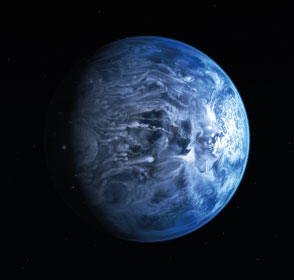Exoplanets – is there life beyond our solar system?
 When I finished school in the mid-1990s, only two planets had been detected outside our own solar system. At this time, many scientists thought that these extra solar planets, or exoplanets, may be quite rare. Since then, over 2000 exoplanets have been discovered. Most of these, using improved technology and techniques, within the last two years.
When I finished school in the mid-1990s, only two planets had been detected outside our own solar system. At this time, many scientists thought that these extra solar planets, or exoplanets, may be quite rare. Since then, over 2000 exoplanets have been discovered. Most of these, using improved technology and techniques, within the last two years.
The first exoplanets to be discovered were large Jupiter sized planets, which due to their large mass, are easier to detect. The predominant ways of finding these planets are either the radial velocity method, or the transit method. With radial velocity, we are looking at small shifts in the stars spectra due to the planet’s gravitational pull making it wobble. With the transit method, the brightness of the star is observed to change as the planet moves in front of it.
The most exciting discoveries have come from the detection of Earth-like planets. In fact, this month saw the announcement of the discovery of three Earth-like planets orbiting a small star, only 40 light years away. The planets have been named TRAPPIST 1b,1c and 1d. Okay, so 40 light years is actually quite far (9,461,000,000,000 km) but with new telescopes under construction, astronomers will be able to look at the atmospheres of these planets to look for the evidence of life.
How will we know from the atmosphere whether life exists on the planet? Methane and oxygen can be bio signatures but we also know that they can be produced by purely chemical processes. However, we do know that high concentrations of oxygen in an atmosphere would be difficult to explain without life.
In the last 20 years, we have learnt that far from being rare, planets orbiting around other stars seems to be the norm. The next step is to use our improved technology to let us know whether we are alone in the universe, or whether there is life out there.
You can model the detection methods for exoplanets and their atmospheres, in the classroom.
What if we wanted to visit these planets? Voyager is our fastest spacecraft launched to date, with a speed of around 17km per second. Why not challenge your students to work out how long it would take to get to the TRAPPIST planets at that speed?
Book your place today on the ESERO-UK and Royal Astronomical Society teacher conference
